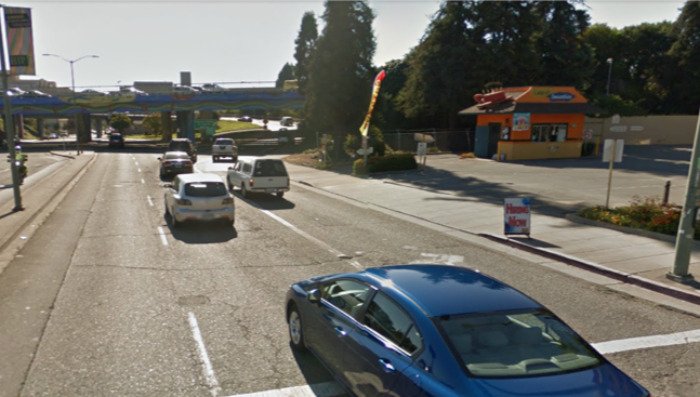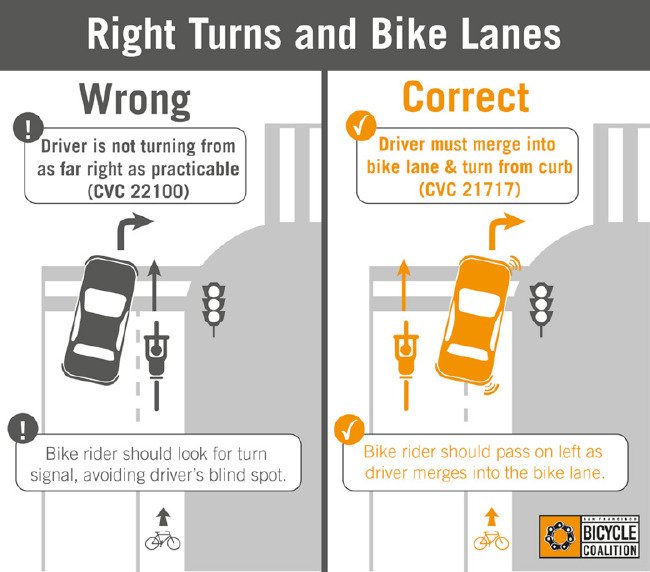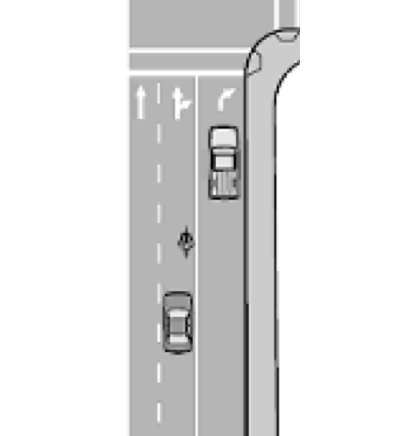Biking on most urban streets may not always be a stress-free experience, but an individual with basic bicycle safety knowledge can usually navigate through streets without incident if everyone behaves safely (albeit a big “if”). However, today we want to talk about one street configuration that even the safest drivers and bicyclists have difficulty navigating: the through-double-right turn.
Before examining the through-double-right turn, it’s necessary to review how bicyclists should generally behave at right turns. The safest practice when approaching a turning car in a bike lane or in mixed traffic is to pass the car on the left. This minimizes the risk for right-hook crashes, which occur when drivers turn into bicyclists traveling in their blind spot. Right-hooks are among the most common crashes, and can be very serious when occurring at high speeds or with trucks. Passing turning vehicles on the left certainly isn’t an ideal solution from a safety or comfort perspective (Dutch cities typically employ protected intersections, among other treatments), but this approach is usually the safest available.
Through-double-right turns are another story. A through-double-right turn occurs when drivers may turn right from two lanes, but may also proceed straight from the innermost lane. It is a configuration that invites conflict between drivers and bicyclists because there isn’t really a safe way to navigate it. If bicyclists ride toward the right, they risk a right-hook or side-swipe crash. If they ride in the center lane, they’re exposed in the middle of what can be fast-moving through traffic. Most problematic of all, this situation creates uncertainty, confusion, and mistakes – a breeding ground for collisions. Rather than creating a street which safely accommodates all modes, a through-double-right configuration is essentially saying “ride at your own risk.”
It’s worth noting at this point that through-double-right turns aren’t just bad for bicyclists: they also can create dangerous conditions for pedestrians. Double right turns usually occur at high speeds and pose a risk for multiple threat crashes. They’re often terrifying to walk across and a hotspot for vehicle-pedestrian collisions.
Despite the inherently dangerous nature of through-double-right turns, they’re seemingly everywhere – even major bicycle routes and high volume pedestrian crossings in San Francisco and Oakland. The good news is that retrofitting these intersections tends to be cheap and straightforward – a little restriping is all it takes to make a street function more safely for all users. Unfortunately, however, for every through-double-right turn that’s removed, another is seemingly added at a new freeway onramp or suburban arterial.
To create safer streets, engineering manuals such as the Caltrans Highway Design Manual and the AASHTO Green Book should take a stronger position against through-double-right turns. They’re a relic of midcentury car-first planning that have no place in modern cities, and any city serious about safety should prioritize their removal.




